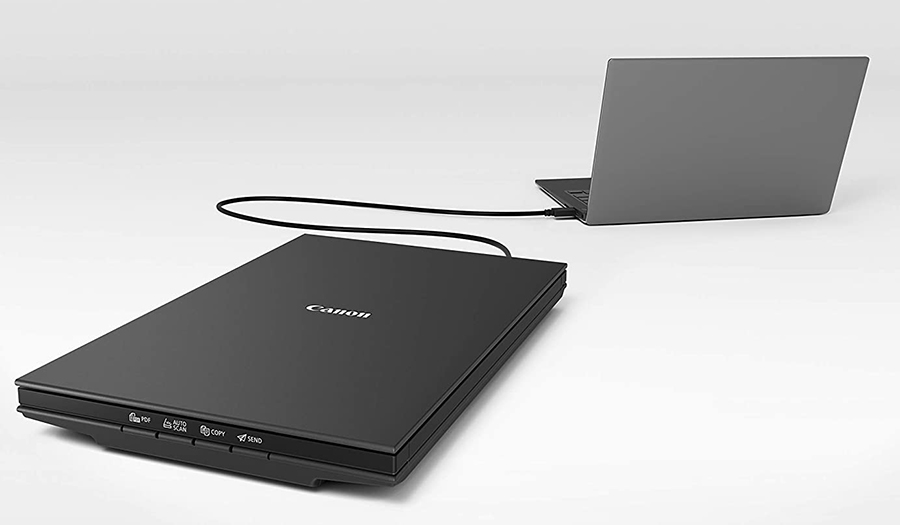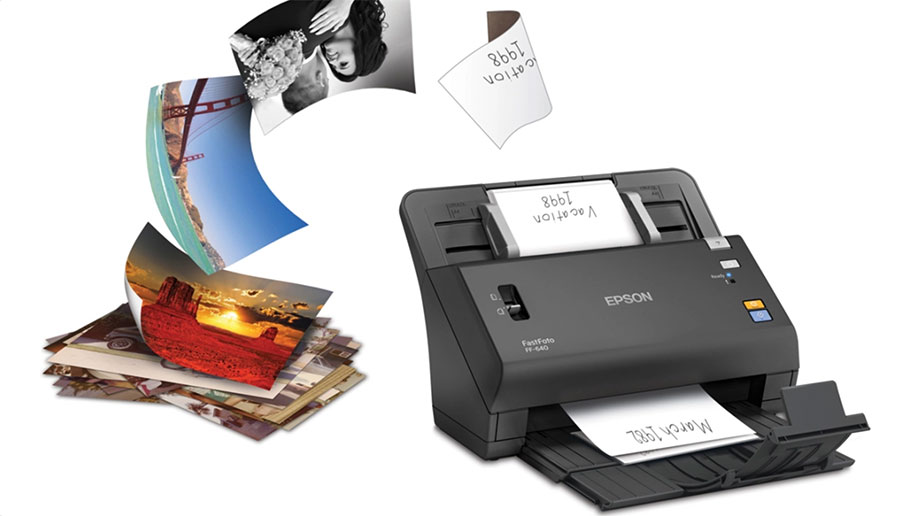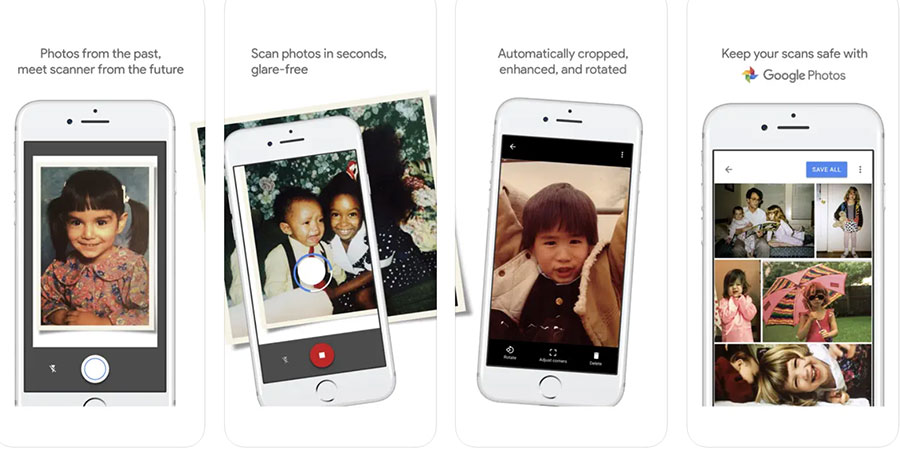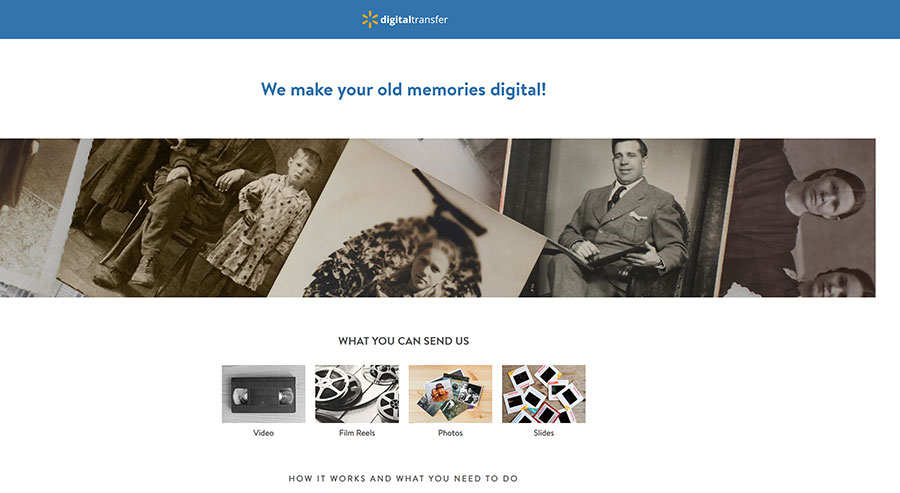
Photo: Shanina/Getty Images
How to (Easily) Digitize Your Photos
BY Marc Saltzman | April 4th, 2024
Chances are you’ve thought about bringing your old paper photos into the digital age.
Great idea. After all, you likely have a lifetime of precious memories trapped in photo albums, shoeboxes or dusty frames.
Sound familiar?
Once digitized, these photographs will no longer fade over time; they can be automatically repaired with smart software (such as adding back in colour, removing red eye and stitching rips); photos can be organized and easily searched by keyword (on a computer, tablet, phone or online cloud site); and you can easily share them with friends and family over email and social media. Or, create fun projects like scrapbooks, slideshows, fridge magnets and more.
There are several ways to go about scanning old photos (or slides or negatives), but it boils down to two main options: do it yourself (DIY) or use a professional service.
DIY With Scanners, All-in-Ones
If you prefer to digitize photos yourself, you can pick up an inexpensive flatbed scanner (from $109), if you don’t already own one. There are also solutions for those with 35 mm film and slides, as low as $49.
You might also invest in a multifunction printer (as low as $75), which is usually an inkjet printer, scanner, photocopier and sometimes a fax machine, too — all in one unit.
When scanning the photos facedown, keep in mind the higher the dots per inch (DPI), the better the resolution will be. For example, 300 DPI is okay for photos, but 600 DPI is recommended to ensure you capture all the details in your pictures. A resolution of 1,200 DPI is only necessary if you’re looking to enlarge a photo to a poster-sized print.

Flatbed scanners also can be used to preserve irreplaceable historical documents, such as birth certificates, marriages licenses, a child or grandchild’s handprint or drawing, newspaper articles, and cherished letters and deeds, as well as images of a sentimental keepsake — like grandma’s favourite broach or a great-uncle’s pocket watch.
Depending on how many photos you have, be aware this process might take a long time.
To speed up photo scanning, you might consider picking up the Epson FastFoto FF-680W ($799), which can scan one 4-by-6 photo per second. Just load 36 photos in the feeder, press a button, and the process is quick and painless.
Aside from the speed at which it can digitize your photo collection, what’s particularly interesting is the ability to capture in a single scan of both the photo and any handwritten notes on the back. With the FastFoto app, you can also record your voice to add stories to the photos.

Used wirelessly over Wi-Fi or connected to a computer via USB cable, the FF-680W scanner also can handle postcards and Polaroid photos; offers photo restoration and editing options, as well as file organization tools, including automatic file naming; and allows you to share images to popular cloud services, such as Dropbox and Google Drive.
Apps, Too
While the quality won’t be anywhere near as good as a photo scanner, another option to do it yourself is to use a smartphone app to digitize your paper photos.
Essentially, you’re taking a photo of a photo, but consider it a “scan,” by hovering your smartphone’s camera lens over the paper photo.
There are free apps that guide you through properly lining up the camera over your photo. Place it on a flat surface, in a well-lit room and watch out for shadows. Some apps may even be able to help you easily crop them (thanks to edge detection), add colour to faded photos, maybe even fit “rips” and let you add some text or narration, too. Many can help you organize your photos into collections as well.
Some popular photo scanning apps for both iOS (iPhone, iPad) and Android phones and tablets:
- Photomyne
- PhotoScan by Google Photos
- Microsoft Lens (Android) or Microsoft Lens (iOS)
- Genius Scan (Android) or Genius Scan (iOS)
- Scan to PDF | Adobe Acrobat

Services
If you have too many photos, are too busy or don’t think you’re tech savvy enough to do it on your own, you can leverage local or national services —and some stores, too — to digitize your photos for you.
For example, there are independent companies like HomeMovies.ca where you can send a box of your photos via Xpresspost by Canada Post. Prices are as low as 10 cents per scan for smaller (4×6 or 5×7) paper photos. The service returns your originals along with a USB drive with your pics on it. Note: HomeMovies.ca does not enhance photos, such as colour restoration, but the company does digitizes home movies, if you have them.
The process typically takes a couple of weeks.
If you prefer to work with a national retailer, Walmart has a digital transfer service for photo and video backup, supporting multiple analog formats, and you’ll get a USB in return along with the originals (typically within 14 business days). For photos, prices are 80 cents each for more than 51 photos. Less than that, it’s $1.30 each (10 to 25 photos) or $1.00 each (26 to 50). Walmart Photo Centre also supports slides, film reels and Hi-8, Digital 8 and VHS video.

Costco has partnered with Shutterfly for a similar service. Active Costco members can receive 51 per cent off regularly priced Shutterfly orders, plus free shipping on orders $49 and over, when accounts are connected using a Costco membership number.
Before you ship them off, it’s best to organize your paper photos by major categories, like decades or people, and then sub-organize them into sections, like family events. Place the photos in a durable box with a lid, divided by index cards and labelled with sticky notes. Avoid rubber bands, which could bend your photos.
Do you have something in your own collection that you think might be worth a few bucks? Looking to buy or sell? Browse the Zone Classifieds and post your ad here.
Classified Deals

ITALY'S HIDDEN TREASURES: TAILORED TRAVEL EXPERIENCES
Tailored travel experiences away from increasing crowdsPOSTED November 21st, 2023
Italy



